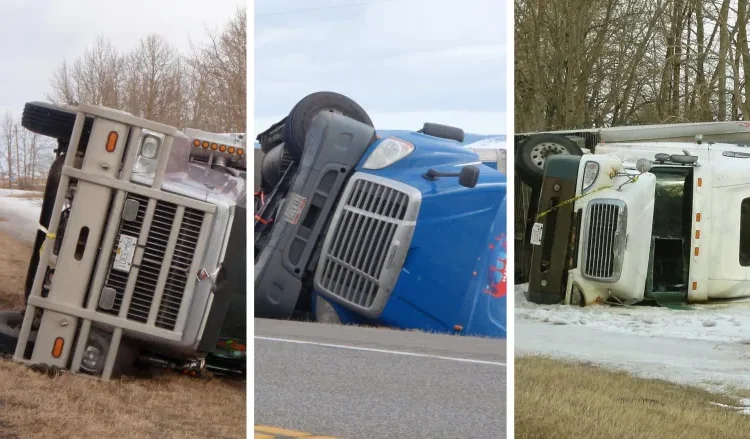As transport industry grows, so do crashes on Highway 22, says Alberta Motor Transport Association
Terry Graf has been driving trucks since he was about 17 years old — it’s been a great trucking life, as he puts it.
For about 11 of those years, Graf hauled logs, gravel and coal up and down Highway 22, and saw first hand what every local trucker in southern Alberta has come to know about that strip of road.
“It’s very, very tricky,” he said. “Especially when you get the spring chinooks. Wind can go up to 140 [kilometres per hour] like nothing.”
Highway 22, otherwise known as the Cowboy Trail, begins near the hamlet of Lundbreck, Alta., travelling north by the eastern slopes of the Rocky Mountains before terminating near the northern town of Mayerthorpe, Alta.

But a 20-kilometre “wind tunnel” has become notorious among drivers in and around the area, and has led to vehicles such as tractor trailers, recreational vehicles and motorcycles being blown by wind gusts into ditches or oncoming traffic.
Graf has seen plenty of incidents over the years where drivers have found themselves suddenly in the ditch. Once, he watched one truck lose its traction on two sets of wheels.
“It was tipped over, and then it came back down when it met me,” he said. “I just pitied that poor guy that was on the other side of the steering wheel. It would be awesomely scary.
“When you’re going into a ditch with a truck, you’re going to hit something and you’re going to do a lot of damage and maybe hurt yourself seriously. So it has a lot of thoughts in your mind.”

Right next door
Bob Costa lives near that stretch of highway. He said that as the frequency and velocity of winds increased, so did the number of big rigs rolling over.
“Might as well say on our doorstep,” Costa said. “So, I started taking photos of all these wrecks, and I compiled quite a number of them.”
Sometimes, in the middle of the night, Costa and his wife would see the flashing lights of emergency vehicles out of their bedroom window, which faces west.
“Oh, boy, I can show you some pretty impressive skid marks,” he said. “And the shock on truck drivers’ faces who just had the ride of their life.”

In 2011, Costa flagged a series of photos of the wrecks in a letter to the Alberta government and set up a meeting with his local MLA.
Shortly after, a task group was formed involving Alberta Transportation, landowners, emergency services and others.
New advisory signs are now posted in the area, and warnings are triggered at 80 kilometres per hour. Lights on the signs begin to flash, and information is posted on electronic billboards and 511.
Dave Cox, former fire chief of Pincher Creek Emergency Services, said while rollovers still occur on the highway, the safety measures have helped significantly in preventing additional incidents.
“We used to [respond to] five blow-overs at the same time,” Cox said.
“You just kind of dealt with them. We were lucky in that we had injuries, and a lot of property damage, but no fatalities that I remember.”
Journey management is key, says association
Chris Nash, president of the Alberta Motor Transport Association, said Highway 22 has become synonymous in southern Alberta with wind.
“The wind isn’t something we can stop. The size of the vehicle is something really you can’t change,” Nash said.
“So, when we look at how we can put solutions forward to make sure drivers are safe, it really comes to journey management — having that opportunity to look ahead on your route, see what’s there … your 511, looking at the overhead signs.”
Nash said the number of incidents on this stretch of road is growing. He attributed this to more trucks being on the road as the industry grows.
“When we look at it, over 51 per cent of Alberta’s GDP moves on the back of a truck,” he said. “So when that grows, and demand grows, we’re seeing it as an industry.”

Safety measures have been put in place, Nash said, but the sheer physics of the direction of travel and the high wind speeds means the journey on the Cowboy Trail is certain to remain a perilous one.
The danger of the conditions is a big reason why stories of this road have spread “far and wide,” Graf said — adding that’s why he’d advise his fellow drivers to drive safe.
“Once you’re in a ditch on the side, it’s too late,” he said.


